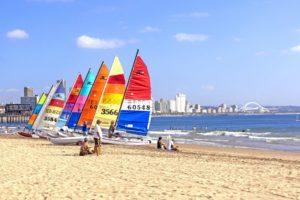Fodor's Expert Review Campbell Collections
Amid bustling, suburban Berea, Muckleneuk is a tranquil Cape Dutch home in a leafy garden. It was built in 1914 upon the retirement of Sir Marshall Campbell, a wealthy sugar baron and philanthropist who lived here with his wife, Ellen, and daughter, Killie. Today it is administered as a museum by the University of KwaZulu-Natal, and is furnished in similar style to when the Campbells lived here, with some excellent pieces of the family's Cape Dutch furniture. In addition to the William Campbell Furniture Museum (William was the son of Sir Marshall) there is an extensive collection of works by early European traveler artists, such as Angas, and paintings by prominent 20th-century Black South African artists, including Gerard Bhengu, Daniel Rakgoathe, and Trevor Makhoba. The Mashu Museum of Ethnology displays the best collection of traditional Zulu glass beadwork in the country, plus African utensils, like tightly woven wicker beer pots, carvings, masks, pottery, and musical instruments.... READ MORE
Amid bustling, suburban Berea, Muckleneuk is a tranquil Cape Dutch home in a leafy garden. It was built in 1914 upon the retirement of Sir Marshall Campbell, a wealthy sugar baron and philanthropist who lived here with his wife, Ellen, and daughter, Killie. Today it is administered as a museum by the University of KwaZulu-Natal, and is furnished in similar style to when the Campbells lived here, with some excellent pieces of the family's Cape Dutch furniture. In addition to the William Campbell Furniture Museum (William was the son of Sir Marshall) there is an extensive collection of works by early European traveler artists, such as Angas, and paintings by prominent 20th-century Black South African artists, including Gerard Bhengu, Daniel Rakgoathe, and Trevor Makhoba. The Mashu Museum of Ethnology displays the best collection of traditional Zulu glass beadwork in the country, plus African utensils, like tightly woven wicker beer pots, carvings, masks, pottery, and musical instruments. There are also weapons dating from the Bambatha Uprising of 1906, during which Blacks in Natal rebelled against a poll tax and were brutally put down. Paintings of African tribespeople in traditional dress by artist Barbara Tyrrell, who traveled around South Africa from the 1940s to 1960s gathering valuable anthropological data, add vitality to the collection. The Killie Campbell Africana Library, open to the public, is a treasure trove of historical information on KwaZulu-Natal. It includes the papers of James Stuart, a magistrate and explorer during the early 20th century; the recorded oral tradition of hundreds of Zulus; a collection of pamphlets produced by the Colenso family in their struggle for the recognition of the rights of the Zulu people; and a good collection of 19th-century works relating to game hunting.
READ LESS






